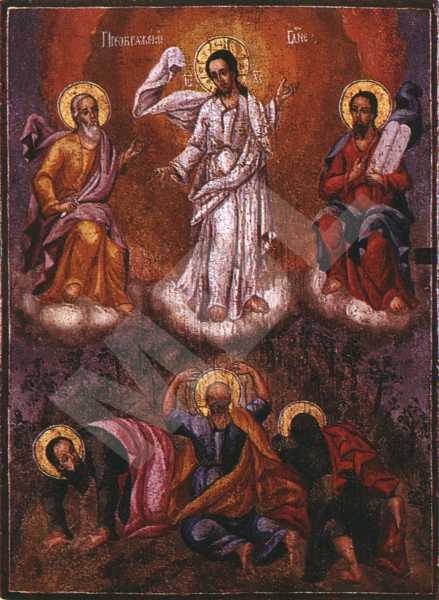The Transfiguration of Jesus Christ
Type:
Icon
Period:
From
the end of the
18 century
to
the beginning of the
19 century
Toma Vishanov-Molera, born around 1750, painter of icons and murals, founder of the Bansko school of art. He grew up in the family of the clergyman Vishan. Around 1765 he went to Vienna, where he studied painting. It is not known who were his teachers there or when he returned to Bansko. His fellow villagers called him the Moler, Molera(from German Maler ‘painter’), whence the entire family's surname. Under the influence of the European 18th century art Toma Vishanov painted his works in a new manner, unknown until then in Orthodox art. The figures are realistic, vivid, expressive. Toma Vishanov is an innovator in the early period of Bulgarian Renaissance. His ideas on art were not understood and at first were rejected by his contemporaries. His work has not been studied extensively. He died after 1811 in Bansko.
Dimmensions (cm):
30.5
/ 22.5
/ 2.3
Location
Country: Bulgaria
Province: Kustendil
Town: Boboshevo
Church: The Assumption of the Virgin
Source
Country: Bulgaria
Province: Kustendil
Town: Boboshevo
Church: The Assumption of the Virgin
Description
Pictured in the upper half of the composition are: in the center - Christ in full length, his head turned slightly rightwards; to his left- and right-hand sides, amidst the clouds, are the Old Testament prophets Moses and Elijah, seated. Down below in the composition are the disciples James, in a squatting position, his hands touching the ground; Peter, also squatting, with his hands thrown up; and next to him John, with his back to front. The Tabor mountain, where the scene takes place, is pictured like a small temple, covered with lowgrowing bushes. The painting is enclosed in a narrow brown frame with a white inner edge.
Iconographical technique: Oil
Oil painting, laid thinly on the ground coat. The transitions are made very precisely with the "wet into wet" technique. The nimbi are gilded with gold-leaf.
Base material: Wood
The base is a one-piece hand-made oak panel, split along the icon's entire length and with a little crack in the middle. The ground coat is of plaster, 0,04 cm thick.
State, restoration traces and comments
There are traces of a previous conservative intervention: an unsuccessful attempt had been made to join the two pieces of the base with bone-glue. An iron cover had been nailed on the icon and had subsequently been removed.


